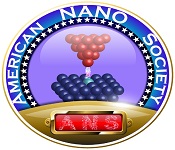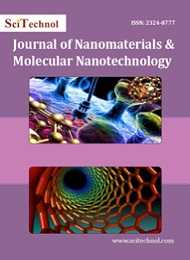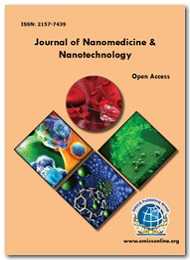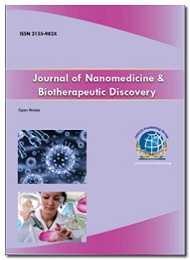Theme: Exploring & Acquiring the advances in Nanotechnology
Nanotechnology-2015
OMICS International conference series invites all the participants across the globe to attend the Nanotechnology Congress & Expo on Aug 11-13, 2015, Frankfurt, Germany. This scientific gathering guarantees that offering the thoughts and ideas will enable and secure you the theme “Exploring & Acquiring the advances in Nanotechnology”. It provides a premier technical forum for reporting and learning about the latest research and development, as well as for launching new applications and technologies.
Track 1: Frontier in Nanoscience and molecular Nanotechnology
Nanoscience and Molecular Nanotechnology is the new frontier of science and technology in Europe and around the world, working at the scale of individual molecules. Top scientists as well as policymakers worldwide praise the benefits it would bring to the entire society and economy: most of them insist on the key role research would play in the value-creation process to develop exploitable portfolios of technologies by the European industry leading to a choice of unique applications, products, markets and profitable revenue sources. The speed of innovation and the rapid uptake of new developments in the field of Nanoscience and nanotechnologies are improving the quality of life of European citizens as well as helping meet the Lisbon European Council objective for the EU to become the most competitive knowledge-based society by 2015. There are more than 50 universities and research institutes all over world for Nanoscience and molecular nanotechnology. Advances in Nano-scale technologies will develop into mass markets in the coming years, with new products and services developed by the industry capable of enhancing human health, while also conserving resources and protecting the environment.
Track 2: Nanofabrication and characterization
Nanofabrication is the design and manufacture of devices with dimensions measured in nanometers. One nanometer is 10 -9 meters, or a millionth of a millimeter. Nanofabrication is of interest to computer engineers because it opens the door to super-high-density microprocessor s and memory chips. It has been suggested that each data bit could be stored in a single atom. Carrying this further, a single atom might even be able to represent a byte or word of data. Nanofabrication has also caught the attention of the medical industry, the military, and the aerospace industry. The market for nanofabrication equipment will grow at a compound annual growth rate of 10.4 percent over the period 2009 to 2014 and reach $90.4 billion in that year, according to Innovative Research and Products Inc. (Stamford, Connecticut).Over the same period the market for semiconductor wafers will grow at a CAGR of 14 percent to double and reach $20.6 billion in that year, the company said.
Track 3: Advance Nanomaterials
Nanomaterials are defined as materials with at least one external dimension in the size range from approximately 1-100 nanometers. Nanoparticles are objects with all three external dimensions at the nanoscale1. Nanoparticles that are naturally occurring (e.g., volcanic ash, soot from forest fires) or are the incidental byproducts of combustion processes (e.g., welding, diesel engines) are usually physically and chemically heterogeneous and often termed ultrafine particles. Engineered nanoparticles are intentionally produced and designed with very specific properties related to shape, size, surface properties and chemistry. These properties are reflected in aerosols, colloids, or powders. Often, the behavior of nanomaterials may depend more on surface area than particle composition itself. World demand for nanomaterials will rise more than two-and-a-half times to $5.5 billion in 2016. Nanotubes, nanoclays and quantum dots will be the fastest growing types. The energy storage and generation and construction markets will offer the best growth prospects. China, India and the US will lead gains among countries.This study analyzes the $2 billion world nanomaterial industry. It presents historical demand data for the years 2001, 2006 and 2011, and forecasts for 2016 and 2021 by material (e.g., metal oxides, chemicals and polymers, metals, nanotubes), market (e.g., health care, electronics, energy generation and storage, construction), world region and for 15 countries.
Track4: Nanoelectronics and Microsystems
Nanoelectronics holds some answers for how we might increase the capabilities of electronics devices while we reduce their weight and power consumption. Improving display screens on electronics devices. This involves reducing power consumption while decreasing the weight and thickness of the screens. Increasing the density of memory chips. Researchers are developing a type of memory chip with a projected density of one terabyte of memory per square inch or greater. Reducing the size of transistors used in integrated circuits. One researcher believes it may be possible to "put the power of all of today's present computers in the palm of your hand”. Microelectronics is one of the main subfield of electronics. As the name indicates, microelectronics is highly related to the study and manufacture of microfabrication of very small electronic components. Micro-sensors that combine optical and mechanical sensor functions with integrated electronic signal processing are rapidly growing in areas such as safety, health, environmental monitoring, and energy control. Relevant examples are collision sensors for airbags and instruments for endoscopy. The global market for nanoelectronics is expected to reach $409.6 billion by 2015, as stated by the new market research report. Nanoelectronics is expected to exercise a considerable influence on semiconductors, displays, memory and storage devices and communication devices.
Track 5: Nanomedicine and Nanobiotechnology
Molecular nanotechnology has been defined as the three-dimensional positional control of molecular structure to create materials and devices to molecular precision. The human body is comprised of molecules, hence the availability of molecular nanotechnology will permit dramatic progress in human medical services. More than just an extension of "molecular medicine," Nanomedicine will employ molecular machine systems to address medical problems, and will use molecular knowledge to maintain and improve human health at the molecular scale. Nanomedicine will have extraordinary and far-reaching implications for the medical profession, for the definition of disease, for the diagnosis and treatment of medical conditions including aging, and ultimately for the improvement and extension of natural human biological structure and function."Nanomedicine is the preservation and improvement of human health using molecular tools and molecular knowledge of the human body."Nanobiotechnology is a new frontier for biology with important applications in medicine. It bridges areas in physics, chemistry, and biology and is a testament to the new areas of interdisciplinary science that are becoming dominant in the twenty-first century. This course provides perspective for students and researchers who are interested in nanoscale physical and biological systems and their applications in medicine. It introduces concepts in nanomaterials and their use with biocomponents to synthesize and address larger systems. Applications include systems for visualization, labeling, drug delivery, and cancer research. The central nervous system (CNS) products market reached $11.7 billion in 2010 and $14.0 billion in 2011. It is expected to grow to $29.5 billion by 2016, a CAGR of 16.1% between years 2011 and 2016.The anticancer products market reached $25.2 billion in 2010 and $28.0 billion in 2011. It is expected to reach $46.7 billion by 2016, a CAGR of 10.8% between years 2011 and 2016.
Track 6: Nanotechnology in energy and environment
Research into hydride materials for energy applications typically focuses on enhancing gravimetric storage density and ion transport of the materials. However, the requirements for stationary applications such as fuel cells can be significantly different and amenable to a broader class of potential materials. Multiple geophysical and social pressures are forcing a shift from fossil fuels to renewable and sustainable energy sources. To effect this change, we must create the materials that will support emergent energy technologies. Solar energy is the utmost priority to develop photovoltaic cells that are efficient and cost effective. Department of Materials Science and Engineering, Stanford University, conducting extensive research on Photovoltaics, Energy storage and Hydrogen storage to meet global Energy requirements.
Track 7: Applications of Nanotechnology
The 2000s have seen the beginnings of the applications of nanotechnology in commercial products, although most applications are limited to the bulk use of passive Nanomaterials Examples include titanium dioxide and zinc oxide nanoparticles in sunscreen, cosmetics and some food products; silver nanoparticles in food packaging, clothing, disinfectants and household appliances such asSilver Nano; carbon nanotubes for stain-resistant textiles; and cerium oxide as a fuel catalyst. As of March 10, 2011, the Project on Emerging Nanotechnologies estimated that over 1300 manufacturer-identified nanotech products are publicly available, with new ones hitting the market at a pace of 3–4 per week. Germany has a social market economy that is considered the fifth largest in the world following the German unification in 1990. Germany’s economic status has recovered from the recession phase between 2008 and 2009 by accepting manufacturing orders and exports from outside the Euro zone. Germany’s GDP as of 2011 was $3.139 trillion. About 71% of the total GDP is contributed by the service sector, 28% by the industrial sector and 1% by the agricultural sector.
Track 8: Industrial Nanotechnology
A complex set of engineering and scientific challenges in the food and bioprocessing industry for manufacturing high quality and safe food through efficient and sustainable means can be solved through nanotechnology. Bacteria identification and food quality monitoring using biosensors; intelligent, active, and smart food packaging systems; nanoencapsulation of bioactive food compounds are few examples of emerging applications of nanotechnology for the food industry. Scientists and engineers in almost all industries are developing nanotechnology to make their products stronger, lighter, more durable, more corrosion resistant and more economical. Many nanotechnology applications are quietly added to existing products to enhance performance. For a list of consumer products known to include nanotechnology.Nanotechnology is a growing interdisciplinary technology that is often seen as a new industrial revolution. Nanotechnology is increasingly attracting worldwide attention owing to its wide range of end-uses. As nanotechnology is evolving, so is the scope for its commercial expansion. The wide range of potential products and applications gives nanotechnology its enormous growth prospects. It has been forecasted that the global nanotechnology industry will grow to reach US$ 75.8 Billion by 2020. In such a scenario, huge opportunity lies for industry participants to tap the fast growing market.
STUDY BACKGROUND
While it appears inevitable that nanotechnology will have a broad and fundamental impact on many sectors of the U.S. economy, various technical, marketing and other hurdles need to be overcome before nanotechnology fulfills this promise. These challenges and differences of opinion regarding commercial applications are reflected in the widely diverging estimates of the U.S. and global nanotechnology markets.
Estimates of the global nanotechnology market in 2010 range from about $15.7 billion (the figure used in this report) to $1 trillion. By 2015, the market may be worth more than $2.4 trillion, according to different analysts. These differences reflect not only different analytical methods and assumptions, but also different definitions of the nanotechnology market (e.g., whether to include decades-old technologies such as carbon black rubber reinforcers and photographic silver, or whether to base the market value on nanotechnology inputs alone, as opposed to the total value of products that incorporate nanotechnology).
Perhaps as a reflection of the difficulty of quantifying the market for nanotechnologies, some analysts downplay the commercial dimensions of the nanotechnology market, and focus instead on the supply side, i.e., the development of new nanoscale technologies and applications. These analysts have made valuable contributions, raising investors’ awareness of and interest in nanotechnologies.
However, by itself, the work of these analysts does not provide sufficient information in order to guide corporate or individual investment decisions. Investors require additional data, such as the size of specific nanotechnology markets, prices, and competition, as well as potential regulation.
STUDY GOALS AND OBJECTIVES
The goal of this report is to provide investors and others with information on the commercial potential of various nanotechnologies and to complement the growing body of technical information. Specific objectives include identifying segments of the nanotechnology market with the greatest commercial potential in the near to mid-term (2010 through 2015), projecting future demand in these segments, and evaluating the challenges that must be overcome for each segment to realize its potential in order to estimate the probability of successful commercialization.
INTENDED AUDIENCE
The report is especially intended for entrepreneurs, investors, venture capitalists, and other readers with a need to know where the nanotechnology market is headed in the next 5 years. Other readers who should find the report particularly valuable include nanotechnology marketing executives and government officials associated with the National Nanotechnology Initiative and other state-level programs that promote the development of the nanotechnology industry. The report’s findings and conclusions should also be of interest to the broader nanotechnology community.
SCOPE OF REPORT
The global market for nanotechnology applications will be addressed. Nanotechnology applications are defined comprehensively as the creation and utilization of materials, devices, and systems through the manipulation of matter at scales of less than 100 nanometers. The study covers nanomaterials (nanoparticles, nanotubes, nanostructured materials, and nanocomposites), nanotools (nanolithography tools and scanning probe microscopes), and nanodevices (nanosensors and nanoelectronics).
A pragmatic decision was made to exclude certain types of materials and devices from the report that technically fit the definition of nanotechnology. These exceptions include carbon black nanoparticles used to reinforce tires and other rubber products; photographic silver and dye nanoparticles; and activated carbon used for water filtration. These materials were excluded because they have been used for decades, long before the concept of nanotechnology was born, and their huge volumes (especially carbon black and activated carbon) would tend to swamp the newer nanomaterials in the analysis.
Nanoscale semiconductors are also excluded from the study, although the tools used to create them are included. Unlike carbon black and activated carbon, nanoscale semiconductors are a relatively new development. However, they have been analyzed comprehensively elsewhere, and like carbon black and activated carbon, would tend to overwhelm other nanotechnologies by their sheer volume in the out-years towards 2015.
PRESENT MARKET
- Total worldwide sales revenues for nanotechnology were $11,671.3 million in 2009, and are expected to increase to more than $26000 Million in 2015, a compound annual growth rate (CAGR) of 11.1%.
- The largest nanotechnology segments in 2009 were Nanomaterials. All Nanomaterials will increase from $9,027.2 million in 2009 to nearly $19,621.7 million in 2015, a compound annual growth rate (CAGR) of 14.7%.
- Sales of Nanotools will experience high growth. This market segment was worth $2,613.1 million in 2009 and will increase at a 3.3% compound annual growth rate (CAGR) to reach a value of $6,812.5 million in 2015.
- Sales of Nanodevices will experience moderate growth. This market segment was worth $31million in 2009 and will increase at a 45.9% compound annual growth rate (CAGR) to reach a value of $233.7 million in 2015.
The organizing committee is gearing up for an exciting and informative conference program including plenary lectures, symposia, workshops on a variety of topics, poster presentations and various programs for participants from all over the world. We invite you to join us at the Nanotechnology-2015, where you will be sure to have a meaningful experience with scholars from around the world. All members of the Nanotechnology-2015 organizing committee look forward to meeting you in Frankfurt, Germany
For more details please visit- http://nanotechnology.omicsgroup.com/
Nanotech is an international platform for presenting research about marketing, exchanging ideas about it and thus, contributes to the dissemination of knowledge in marketing for the benefit of both the academia and business. It covers a broad area of physics- Nanophysics, Material Science, Smart Materials and others. It will help to gain knowledge about the recent advancements and it is of course a good opportunity to discuss various aspects of Nanotechnology
WHY FRANKFURT???
Frankfurt officially known as Frankfurt am Main, is the largest city in the German state of Hessen and the fifth-largest city in Germany, with a population of 701,350 (2013) within its administrative boundaries. The city is at the centre of the larger Frankfurt Rhine-Main Metropolitan Region which has a population of 5,500,000 and is Germany's second-largest metropolitan region. Since the enlargement of the European Union in 2013, the geographic centre of the EU is about 40 km (25 mi) east of Frankfurt.
Frankfurt is the largest financial centre in continental Europe and ranks among the world's leading financial centres. It is home to the European Central Bank, Deutsche Bundesbank, Frankfurt Stock Exchange and several large commercial banks. The European Central Bank is the central bank of the eurozone, consisting of 18 EU member states that have adopted theeuro (€) as their common currency and sole legal tender.
The Deutsche Bundesbank is the central bank of Germany and as such part of the European System of Central Banks. The Frankfurt Stock Exchange is one of the world's largest stock exchanges by market capitalization and accounts for over 90 percent of the turnover in the German market. In 2010, 63 national and 152 international banks had their registered offices in Frankfurt, including the headquarters of the major German banks, notably Deutsche Bank, Commerzbank, DZ Bank and KfW, as well as 41 representative offices of international banks. Frankfurt is therefore considered a global city (alpha world city) as listed by the GaWC group's 2012 inventory.
Due to its central location within Germany and Europe, Frankfurt is a major air, rail and highway transport hub. Frankfurt Airport is one of the world's busiest international airports by passenger traffic and the main hub for Germany's flag carrierLufthansa, the largest airline in Europe. Frankfurt Central Station is one of the largest terminal stations in Europe and the busiest junction operated by Deutsche Bahn, the German national railway company, with 342 daily trains to domestic and European destinations. Frankfurter Kreuz, the Autobahn interchange close to the airport, is the most heavily used interchange in the EU utilized by 320,000 cars daily.
Major Nanotechnology Associations around the Globe
New England Nanotechnology Association (NENA)
Asian Nanoscience and Nanotechnology Association
International Association of Nanotechnology
American Society for Testing and Materials (ASTM International).
Nanoscale Science Research Centers (NSRCs)
Australian Research Council Nanotechnology Network (ARCNN)
Global Nanotechnology Network (GNN)
Materials Research Society
International Union of Materials Research societies
Major Nanotechnology Associations around the Europe
German Association of Nanotechnology
Brazilian Nanotechnology National Laboratory
International Council on Nanotechnology (ICON)
Nano Science and Technology Institute (NSTI)
Top Universities in Europe:
University of Oxford
University of Cambridge
Imperial College London
Queens marry university
Nanotechnology-2015 is an exciting opportunity to showcase the new technology, the new products of your company, and/or the service your industry may offer to a broad international audience. It covers a lot of topics and it will be a nice platform to showcase their recent researches on Nanotechnology , Material Science and other interesting topics.
Eminent Scientists/ Research Professors, Junior/Senior research fellows, Students, Directors of companies, Engineers, Members of different physics associations.
Nanotechnology as an industry has crept into several other major industry topics covered by BCC Research. The innovation and emerging nanotechnologies have significantly reshaped the manufacturing, biotechnology, environmental and pharmaceutical markets. Nanoporous, nanotubes, nanocomposites,Nanotoxicology and nanoclays are all covered within BCC Research reports. In-depth market analysis of these technologies as well as trends, forecasts and profiles of major players prove how valuable the growth of nanotechnology has become. Efficiency of nanotechnology has led to great discoveries in prescription drug products, photonics and has had a great environmental impact in the water treatment and decreasing the amount of pollutants that deplete the environment.
For more information Click Here
To share your views and research, please click here to register for the Conference.
To Collaborate Scientific Professionals around the World
| Conference Date | August 11-13, 2015 | ||
| Sponsors & Exhibitors |
|
||
| Speaker Opportunity Closed | Day 1 | Day 2 | Day 3 |
| Poster Opportunity Closed | Click Here to View | ||
Useful Links
Special Issues
All accepted abstracts will be published in respective Our International Journals.
- Journal of Nanomaterials & Molecular Nanotechnology
- Journal of Nanomedicine & Nanotechnology
- Journal of Nanomedicine & Biotherapeutic Discovery
Abstracts will be provided with Digital Object Identifier by












